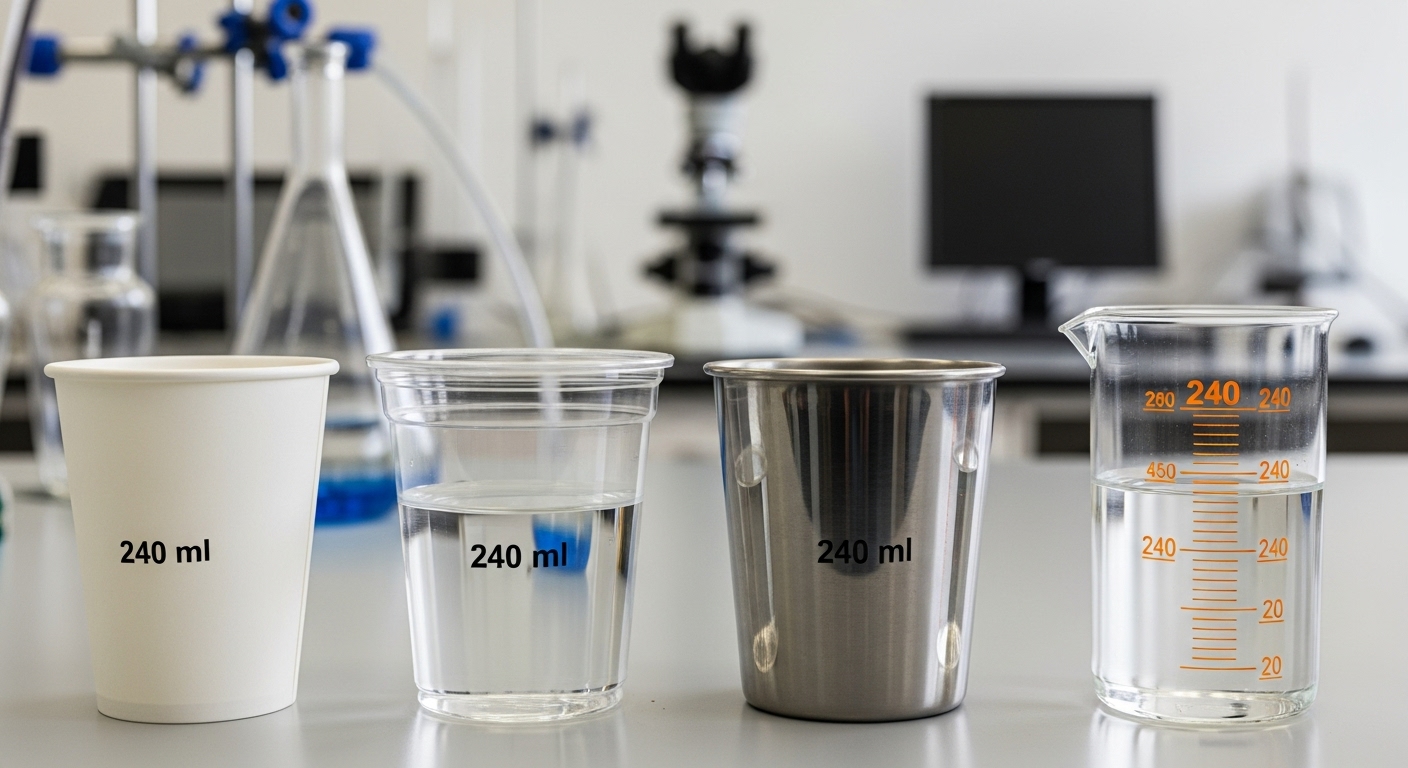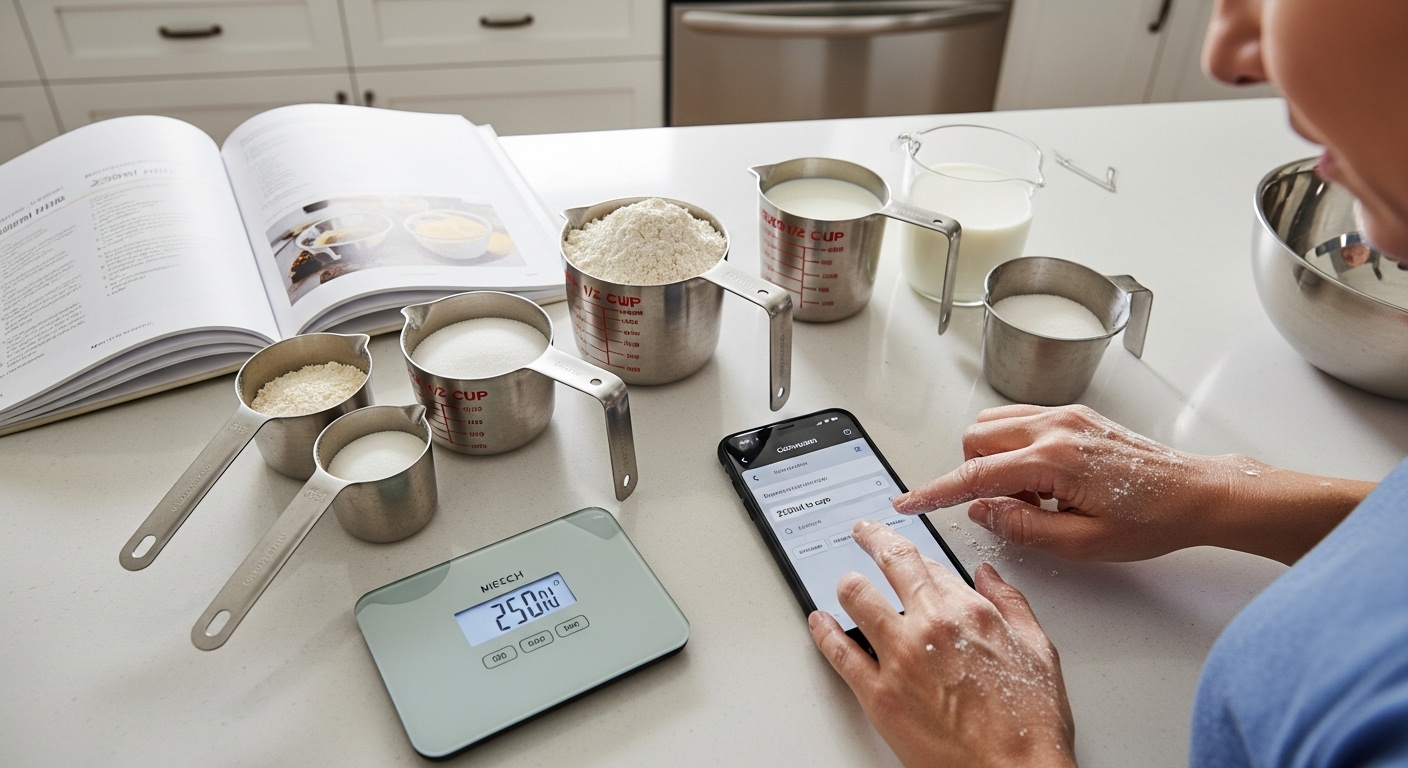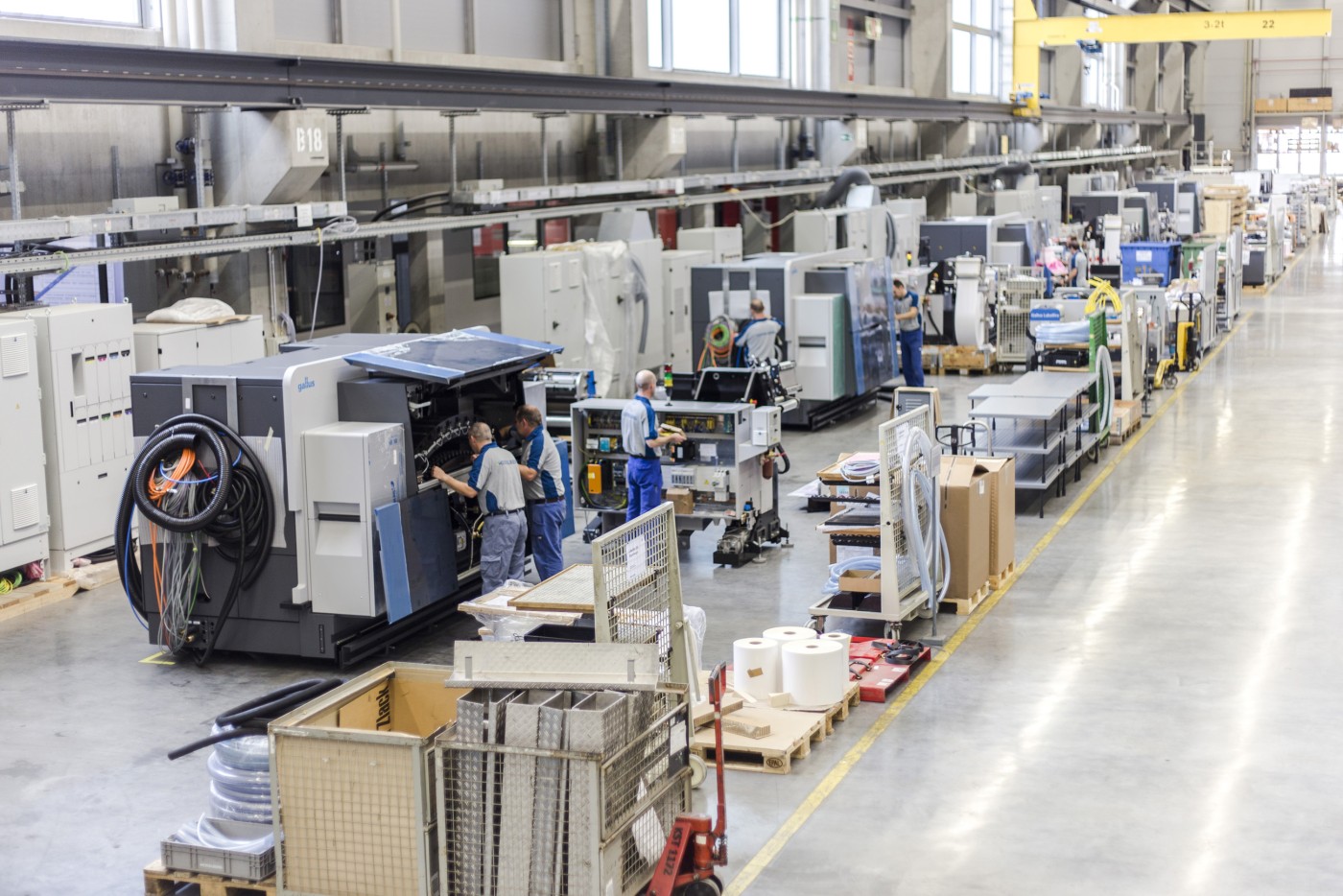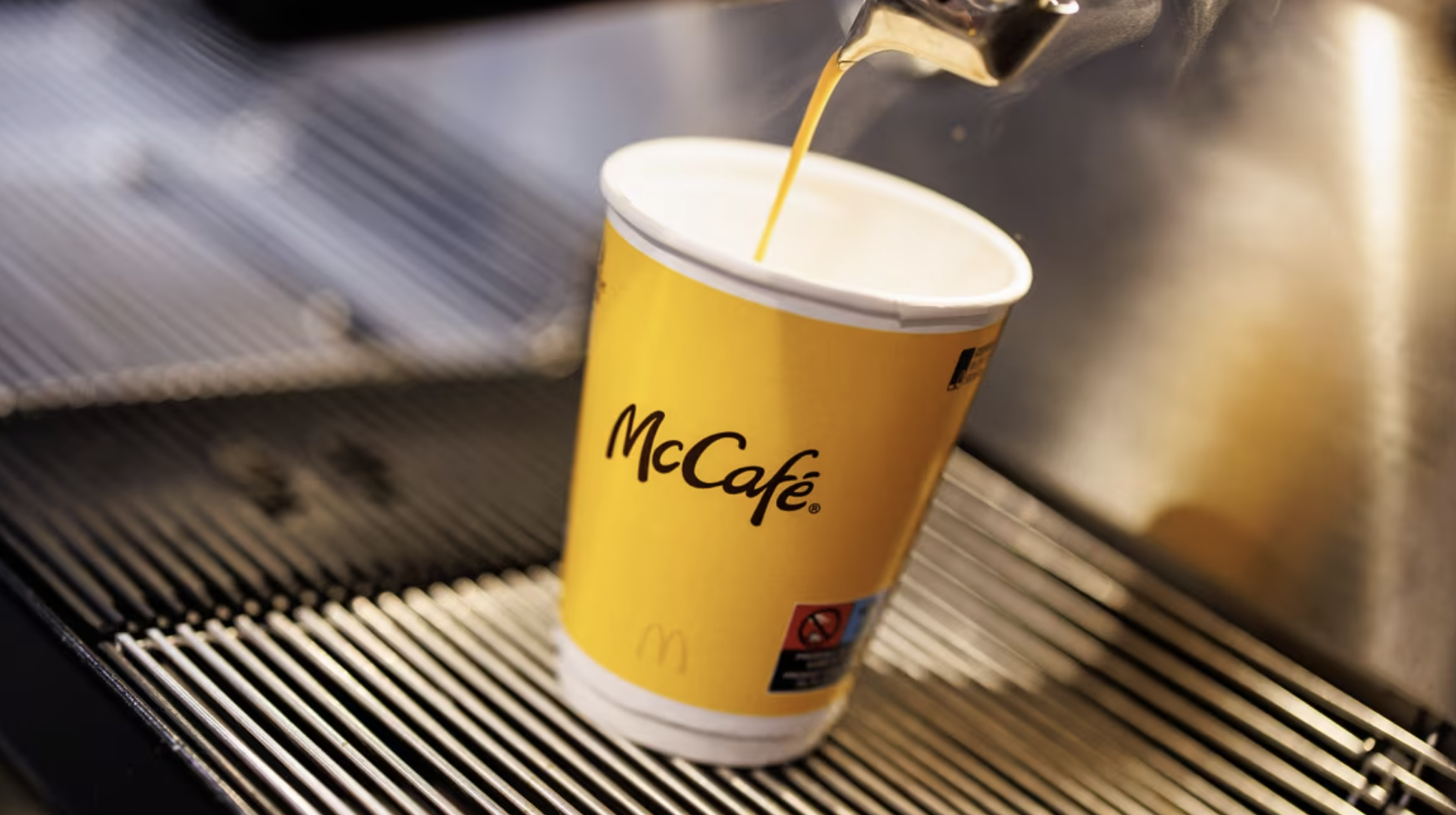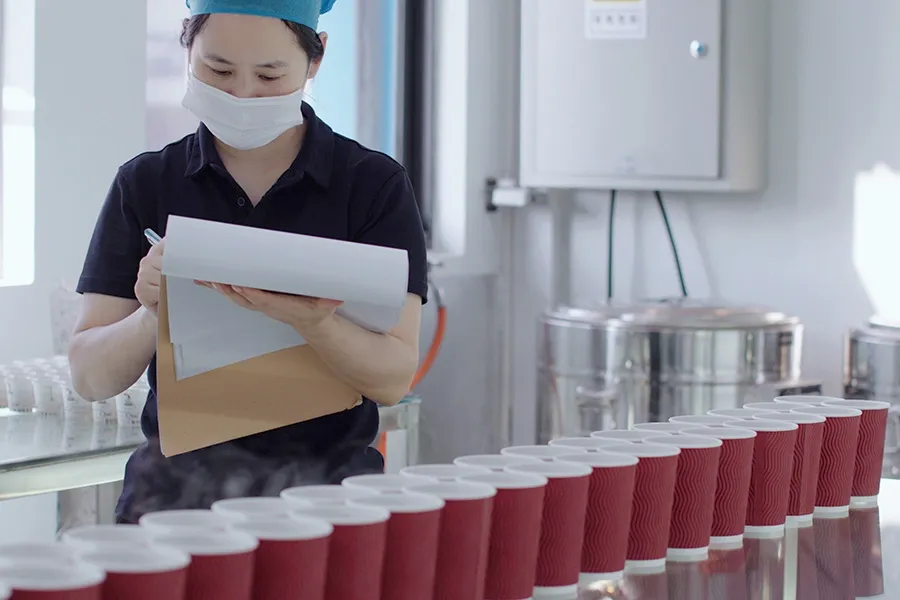Grammage, or Grams per Square Meter (GSM), is a fundamental metric in paper cup production. Historically, as paper cup usage increased in the mid-20th century, standardizing GSM became crucial for ensuring consistent quality and performance across the industry.
What does gsm mean in paper?
GSM is the most regular standard that deciding the thickness unit of paperboad cups.
If you are a buyer, particularly those in coffee and restaurant chain procurement, or those involved in or preparing to enter paper cup manufacturing or importers and wholesale distributors of paperboard cups, you are at right place, this article focus on solving those problems:
- For paper cup buyers or wholesaler, choose right quality by knowledging on GSM of paper cups
- For paper cup making business starter, select right GSM for your paper cups to adapt local markets
What is GSM of paper cups?
GSM means the weight of paper grams per square meter (GSM).
Simple 2 steps to get the GSM:
- You cut a piece of any square paper (like 2 cmx2 cm, or 4 cmx 4cm, you should get from cup body or paper sheet)
- You get the GSM wieght (accurate to within 0.01 gram) and divide it to area of paper (0.0004 sqm or 0.0016 sqm)
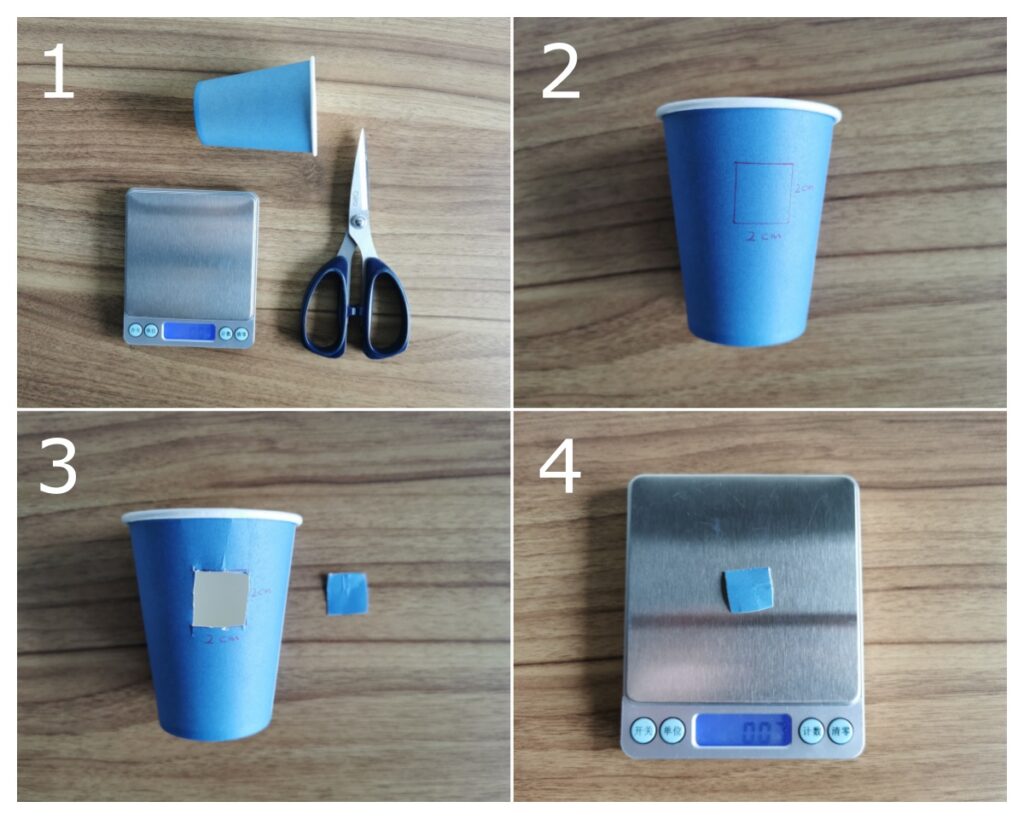
Grams per Square Meter (GSM) is more than just a technical specification—it’s a key factor in market positioning and product differentiation in the global paper cup industry.
As of 2024, the market is seeing a shift towards higher GSM cups due to increasing demand for quality and sustainability.
Paper composition significantly influences GSM:
- Softwood fibers provide strength, while hardwood fibers enhance formation and smoothness
- Fiber length and distribution affect the paper’s structural integrity
- Higher GSM generally correlates with increased cup strength and better insulation
GSM Ranges for Paper Cups
All Paper GSM of paper cup:
135 gsm, 140 gsm, 150 gsm, 160 gsm, 170 gsm, 185 gsm, 190 gsm, 200 gsm, 210 gsm, 230 gsm, 250 gsm, 260 gsm, 280 gsm, 300 gsm, 320 gsm, 330 gsm, 340 gsm
Paper gsm conversion to thinkness:
Paper Thinkness is GSM multiply by paper bulkness * 0.01 mm
*Paper Bulkness= 0.14-0.16
e.g.: 300gsm paper thickness= 300*0.14*0.01 mm=0.42 mm
See part of technical date sheet for paperboard(gsm paper chart)
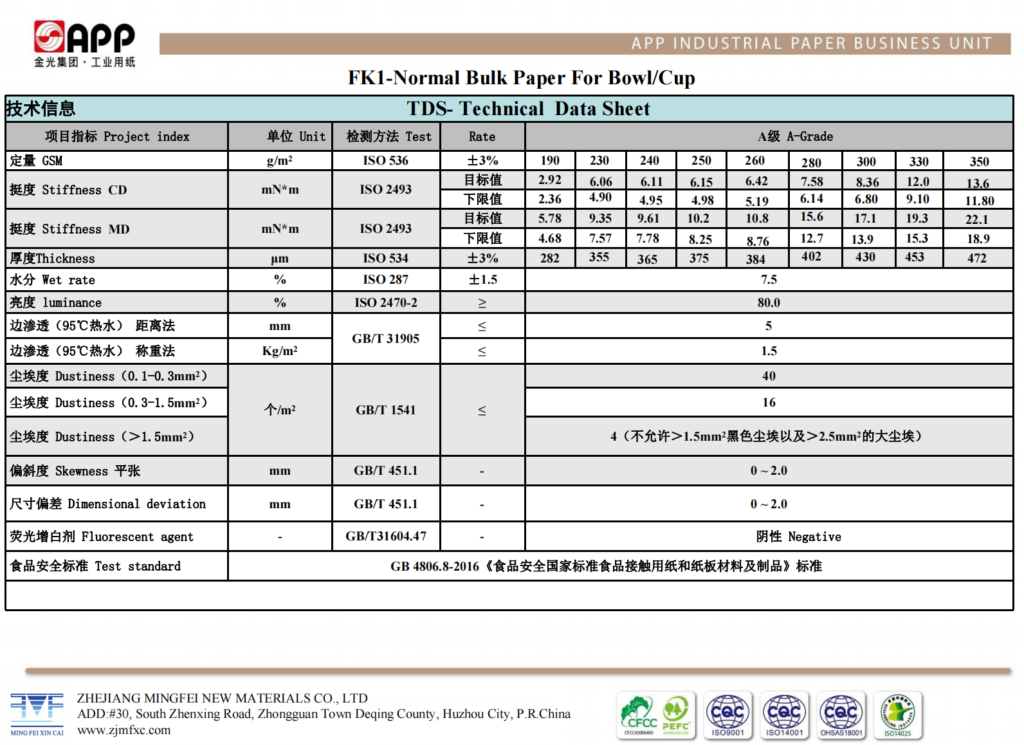
Different paper gsm comparison, paper cups typically fall into three GSM ranges:
- Light weight from 135-200 GSM: Short-term use. Cost-effective but may not provide adequate insulation for hot drinks, suitable cup sizes range: 1 oz, 2.5 oz, 3 oz, 4 oz, 5 oz, 6 oz, 6.5 oz, 7 oz, 8B oz, 9 oz
- Medium weight from 210-280 GSM: Common range. Offering a good balance between durability and cost-effectiveness, suitable cup sizes range: 6 oz, 7 oz, 8 oz, 10 oz, 12oz
- High weight from 280 to 340 GSM: Premium cups with excellent insulation and durability. Ideal for hot beverages and situations where cup integrity is paramount, suitable cup sizes range: 12 oz, 14 oz, 16 oz, 20 oz, 22 oz, 32 oz etc

Factors Affecting GSM Select
Several factors should influence your GSM choice:
- Beverage type: Hot drinks require higher GSM for better insulation and to prevent burns.
- Cup size and capacity: Larger cups may need higher GSM to maintain structural integrity.
- Cost considerations: Higher GSM generally means higher cost, so balance quality with budget.
GSM Preferences Across Different Markets
- North American market:
- Preference for medium to high GSM (220-300 GSM)
- Increasing demand for eco-friendly options, influencing GSM choices
- European market:
- Strict regulations pushing towards higher GSM (250-350 GSM) for better recyclability
- Growing market for reusable paper cups, often requiring 350+ GSM
- Asian market:
- Wide range of preferences, from low GSM (140-220 GSM) in price-sensitive segments to high GSM (280+ GSM) in premium markets
- Rapid growth in eco-conscious consumers driving up GSM in major urban centers
- Emerging markets:
- Generally favoring lower GSM (170-220 GSM) due to cost considerations
- Gradual shift towards higher GSM as disposable income increases
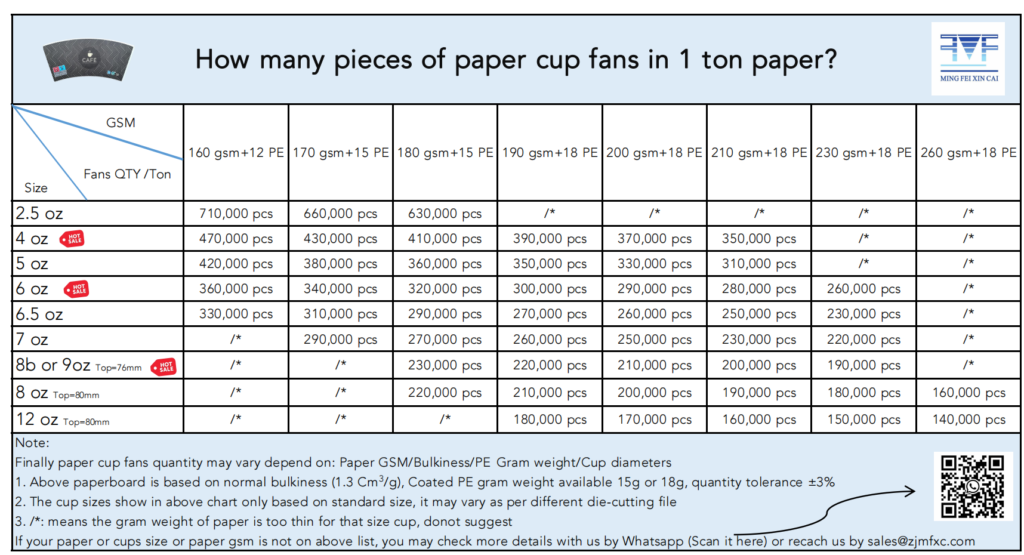
Navigating GSM Requirements for Different Clients
Fast food chains:
- Prefer 210-260 GSM for a balance of cost and performance
- Larger sizes may require higher GSM for structural integrity
Coffee shops:
- Specialty coffee shops often demand 280-350 GSM for heat retention and premium feel
- High-volume chains may opt for 230-280 GSM as a compromise
Airlines and travel industry:
- Compact storage needs drive demand for lower GSM (190-230 GSM)
- Premium airlines may use up to 300 GSM for first-class service
Healthcare sector:
- Prioritizes safety and hygiene, often requiring 260-320 GSM
- Increasing interest in disposable yet eco-friendly options influencing GSM choices
Optimizing GSM for Different Cup Designs
Single-wall paper cups:
- Typical range: 170-350 GSM
- Higher GSM for hot beverages, lower for cold
Double-wall paper cups:
- Inner wall: 180-230 GSM
- Outer wall: 250-300 GSM
- Air gap provides additional insulation
Ripple/corrugated paper cups:
- Base bottom paper: 170-190 GSM
- Corrugated layer: 90-120 GSM
- Combined effective GSM: 260-310 GSM

Conclusion
Choosing the right GSM for your paper cups is a balance of functionality, cost, and sustainability. For most coffee shops and restaurants, a range of 230-260 GSM offers a good compromise. However, premium establishments might opt for 280+ GSM for a luxury feel.
Remember:
- Always test samples before large orders
- Consider your specific use case and customer expectations
- Stay informed about new materials and manufacturing techniques that might offer better performance at lower GSM
By understanding GSM, you’re empowered to make choices that benefit your business, satisfy your customers, and align with your values.


